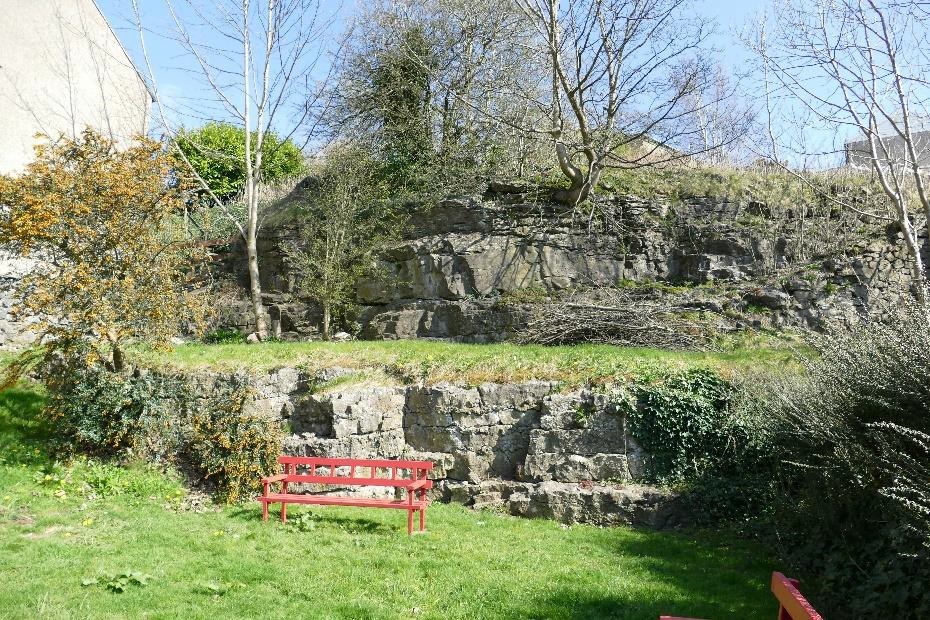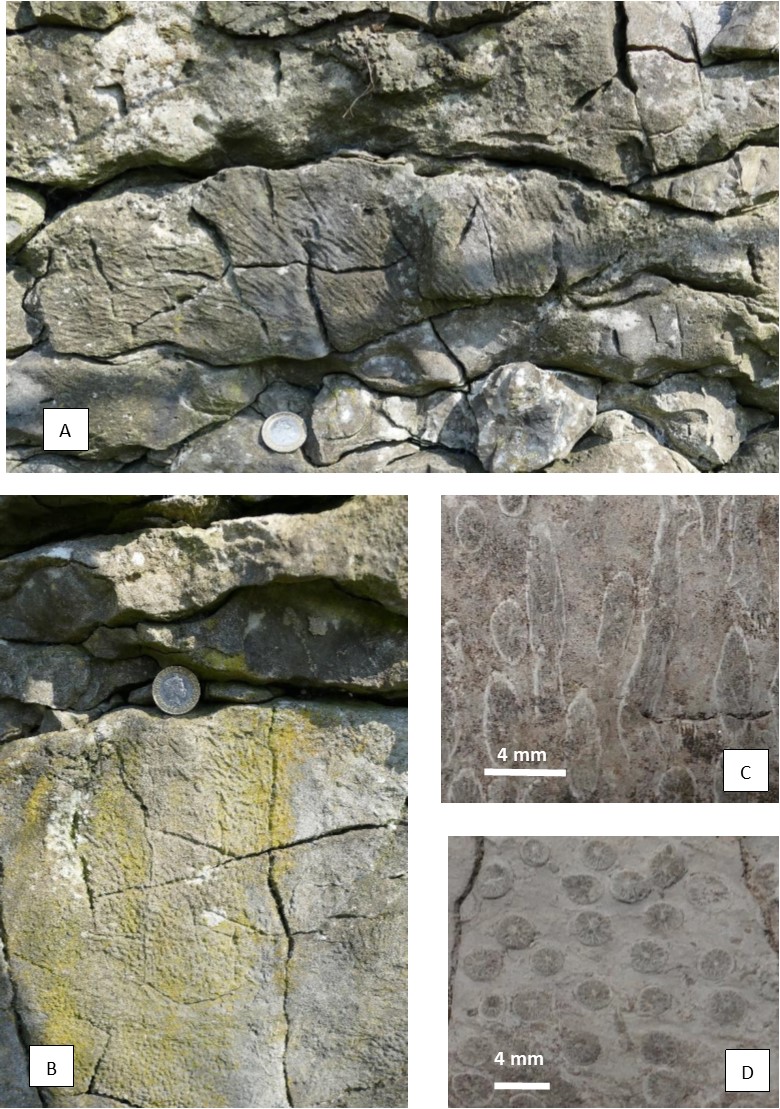Natural Heritage of Buxton: Geology
Professor Richard Pattrick on Fairfield Road's Carboniferous Corals
An outcrop of limestone on the east side of Farfield Road, Buxton (Fig 1) displays an excellent example of Carboniferous corals. The outcrop at [53°15'40.56"N 1°54'19.55"W] is a 3m vertical section, 25m long, set back 20m from the road.
The rock is the Eyam Limestone, of the Late Brigantian sub-stage (CX)(P2) of the Visean, Mississippinian stage of the Carboniferous. It is a dark grey limestone with distinctive chert bands (BGS Lexicon, 2019).
The coral is Siphonodendron junceum (Aretz and Nudds, 2005) – Order: Rugosa; Family: Lithostrotionidae. It is a reef build up, colonial rugose coral. This coral is displayed in transverse and cross sections of large (40cm) colonial masses (Fig. 2).
The importance of the site is that it is an excellent example of a colonial coral, easily seen over a long stretch of outcrop.
References.
M. Aretz and J. Nudds. 2005. The coral fauna of the Holkerian/Asbian boundary stratotype section (Carboniferous) at Little Asby Scar (Cumbria, England) and implications for
boundary. Stratigraphy 2(2):167-190. https://www.bgs.ac.uk/lexicon/lexicon.cfm?pub=EYL

Fig 1 Outcrop of coralliferous, Carboniferous Limestone on the east side of Fairfield Road, Buxton

FIG 2 A & B) Colonial masses of S. junceum C) Oblique section of S. junceum D) Cross section of S. junceum. All Farfield Road site.